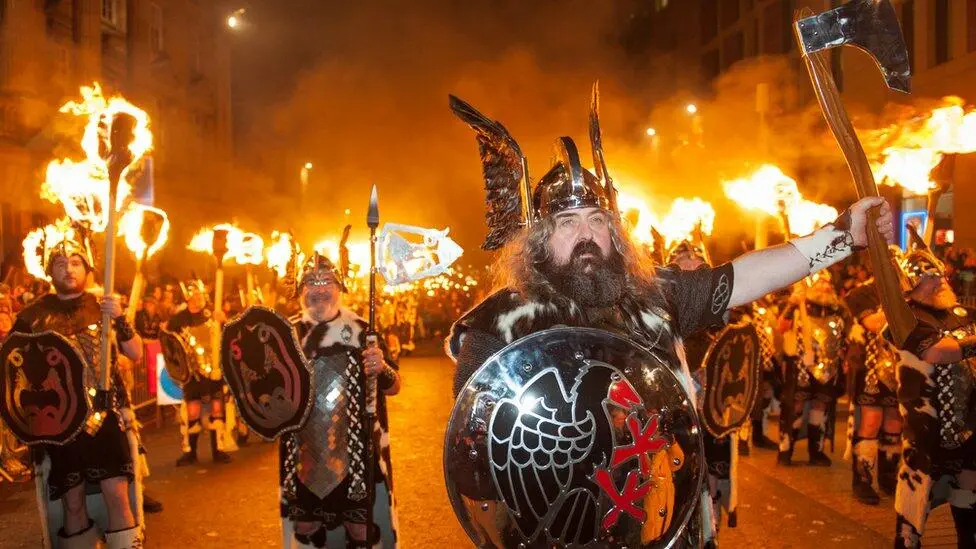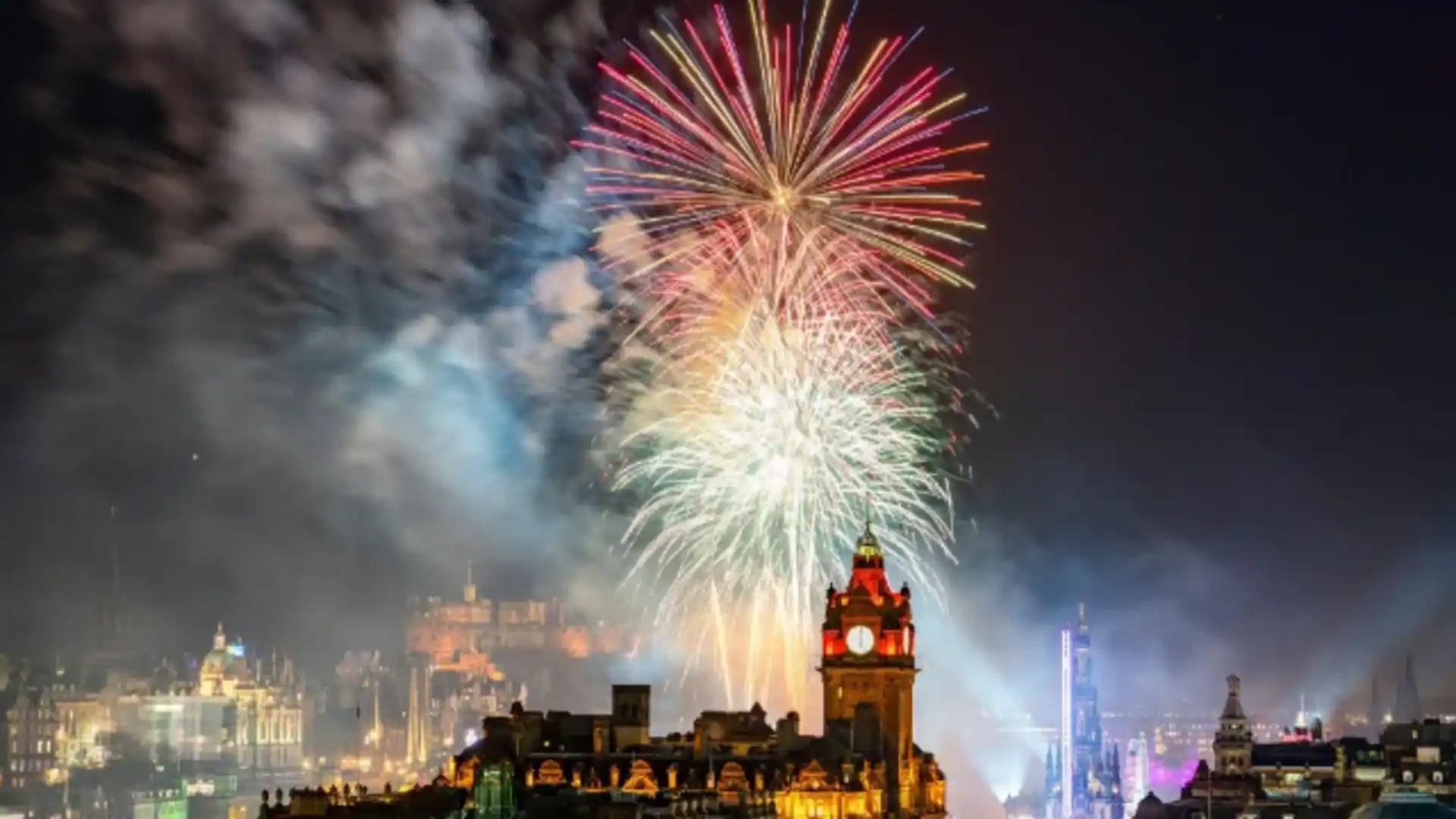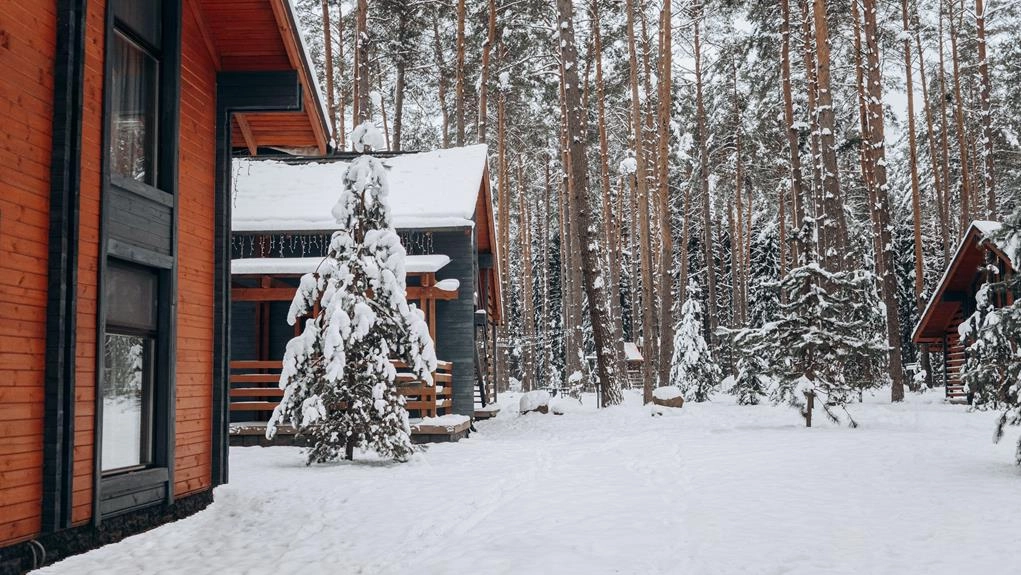Curious about how New Year’s Eve is commemorated around the world? Consider Scotland and its vibrant Hogmanay traditions. These include the fascinating ‘first-footing’ custom and the communal singing of ‘Auld Lang Syne’, each rich with history and symbolism. The mesmerizing fire ceremonies are also a sight to behold. There is much more to learn, especially if you are thinking of celebrating the New Year in Scotland. In addition to these customs, Scottish New Year celebrations often feature lively street parties filled with music, dance, and, of course, plenty of traditional food and drink to enjoy. The atmosphere is electric as communities come together to usher in the New Year with hope and joy. For those considering this unique cultural experience, participating in local festivities will undoubtedly create unforgettable memories. As the clock strikes midnight, the sky lights up with fireworks, symbolizing the beginning of new beginnings and possibilities. Scotland’s yearly festive celebrations are not just an occasion to mark the passage of time, but also a time to reflect on the past year and set intentions for the future. With a mix of ancient rituals and modern revelry, the spirit of Hogmanay truly captures the essence of community and togetherness.
Understanding the Hogmanay Celebration
We shall now focus on Hogmanay, an inherent part of Scottish culture that signifies the end of the year with a spectrum of traditions and customs. Your path to comprehension begins with this distinctive celebration that goes beyond mere merriment into a domain of time-honored traditions and community connection.
When the hour hand points to twelve on the last day of the year, Scotland is imbued with the vibrant spirit of Hogmanay. One element you will surely admire is the Hogmanay cuisine. A special meal, often featuring steak pie or haggis, is prepared by Scots, symbolizing a plenitude and prosperity for the year ahead. This isn’t simply about food; it’s a culinary tradition immersed in symbolism and shared societal values.
The Hogmanay music tradition is just as captivating. The sounds of bagpipes fill the frosty winter air, their resonant melodies contributing to the atmospheric celebration. The act of singing ‘Auld Lang Syne’, a Scottish poem set to tune, is a vital part of the festivities, creating a bond among everyone in a communal expression of nostalgia and hope.
The Historical Roots of Hogmanay

Examining the historical origins of Hogmanay, a compelling blend of Gaelic, Scandinavian, and Old English influences emerge. The term ‘Hogmanay’ mirrors this cultural diversity, with varying theories regarding its origin. This fusion of traditions has culminated in an unparalleled celebration.
Going further into the history, one can trace the Pagan roots of Hogmanay, firmly embedded in Viking and Celtic customs. Ancient celebrations like the Winter Solstice and Samhain were instrumental in shaping the unique character of Hogmanay. The Gaelic cultural elements are quite prominent, weaving together a rich tapestry of practices into this Scottish festivity.
The recognition of Hogmanay as a cultural celebration in Scotland dates back to the Scottish Reformation in the 16th century. This key historical event helped establish Hogmanay’s place, enabling it to grow and transform into the celebration we recognize today. This lively fusion of history and tradition has positioned Hogmanay as an important part of Scottish culture, welcoming the New Year with a peculiarly Scottish twist.
Traditional Hogmanay Customs and Rituals

Understanding the historical progression of Hogmanay is intriguing, but grasping the traditional customs and rituals that accompany it brings this Scottish celebration to life like nothing else. One such tradition includes ‘first footing.’ This ritual holds a significant place in Hogmanay folklore, and has contemporary variations. If you are the first individual to set foot across the threshold after midnight, it is believed that you have the ability to alter the luck of the forthcoming year. You must carry symbolic presents like coal or a small drink, which serve as omens of good fortune.
Fire is an essential element, representing the sun’s reappearance and acting as a deterrent to malign spirits. When the clock marks the start of a new year, you’ll unite with others in a rendition of ‘Auld Lang Syne,’ extending a harmonious goodbye to the departing year.
Here’s a brief explanation of these customs:
| Customs | Meaning | Symbols |
|---|---|---|
| First Footing | Fortune for the New Year | Presents such as coal or alcohol |
| Fire rituals | Deter malign spirits | Fire |
| Auld Lang Syne | Goodbye to the previous year | Melody |
These first footing traditions, owing to their worldwide influence, provide a distinctive manner to welcome the New Year, reflecting the essence of freedom and community that is integral to Hogmanay.
Celebrating Hogmanay: Popular Events

For those interested in immersing themselves in Hogmanay celebrations, Edinburgh and Glasgow hold some of the most popular festivities, attracting a crowd of thousands every year. In Edinburgh, the city transforms into an enormous street party, featuring a variety of cultural performances such as a torchlight procession, a fire festival, and street theater. Events designed for children and a food fair ensure that there is something for all ages. However, ensure you secure your tickets early, as they tend to sell out due to the immense popularity of the event.
Glasgow, on the other hand, welcomes more than 50,000 attendees to a grand celebration that features a wide array of music genres including hip hop, latino, jazz, and traditional ceilidh. The city’s Hogmanay event is the perfect blend of modern and traditional, where the sky is lit up with fireworks, accompanied by the haunting melody of a piper playing Auld Lang Syne.
Both cities host numerous live music performances that promise to keep visitors entertained. So, if you’re interested in street parties, cultural performances, fireworks, or live music, these Scottish Hogmanay celebrations have it all. Join the Scots in their unique way of bidding the old year farewell and ushering in the new one with much fanfare and joy.
Tips for Tourists at Hogmanay

Planning to partake in Scottish Hogmanay festivities? Here are some vital tips to ensure you enjoy your Scottish New Year to the fullest.
One important tip is to secure your tickets well ahead for sought-after events like the Hogmanay celebrations in Edinburgh. Leaving it until the last minute might lead to disappointment.
Prepare yourself for the throng of people and be open to Scottish customs like first-footing. This will allow you to truly experience Hogmanay.
Ensure you are dressed suitably. Scotland’s winter weather can be harsh, so it’s vital to wear warm, festive attire.
| Preparation Tips | Why It’s Important |
|---|---|
| Purchase tickets ahead of time | Sought-after events quickly sell out |
| Be open to local customs | It enriches your Hogmanay experience |
| Dress in warm, festive clothing | Scotland’s winter weather is harsh |
Look into other celebration options available and don’t forget, public holidays are observed on January 1 and 2. Lastly, make sure you are well-rested and prepared for late-night festivities. Sampling the local cuisine is part of the fun!
Hosting Your Own Scottish New Year

Planning to throw a Scottish New Year bash in the coziness of your own place? Here are a few pointers to assist you in curating a genuine Hogmanay experience.
Start with setting the ambiance with customary Scottish adornments. Use tartan material, thistles, and Scottish flags to turn your area into a Scottish sanctuary. For your festive meal, dish out classic food such as haggis, neeps, and tatties.
Include these components in your celebration:
- Request a dark-haired male friend to be the first one to step into your home post midnight, adhering to the first footing tradition. He should carry symbolic presents like coal or bread to bring good luck.
- Perform ‘Auld Lang Syne’ at midnight. This tradition helps you bid adieu to the past year and greet the new one.
- Think about conducting a bonfire or lighting candles, signifying the return of the sun and keeping away evil spirits.
- Suggest guests to wear tartan or traditional Scottish clothes to augment the authenticity of the party.
With these steps, your Scottish New Year bash will be enjoyable and immersed in tradition and genuineness.

